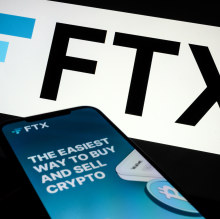FTX and Sam Bankman-Fried’s failure is explained by the crypto-currency Serum
Reassessment
Now that Bankman-Fried is being held personally responsible for the implosion of a technology that Australian crypto investor Mark Carnegie once predicted would, Marx-style, re-define the relationship between labour and capital, it would seem fair to add weak accounting skills to the debit side of his personality.
The $US8 billion “poorly labelled” account, which was also described as “hidden”, sounded more like an excuse than an asset. It was recorded as a negative amount of cash on the Excel balance sheet, but should have been positive if it was, as Bankman-Fried told the FT, an “accidental” extension of credit to a trading firm run by his ex-girlfriend, Caroline Ellison.
A Stanford University maths graduate, Ellison wasn’t a fan of conventional financial practices at Alameda Research, a crypto hedge fund. Like selling assets falling in price.
“We tend not to have things like stop losses,” she told the El Momento podcast last year. “I think those aren’t necessarily great risk management tools.”
Alameda and FTX were placed into bankruptcy on Friday, sending the crypto world into a paroxysm of angst (Carnegie: “You think, ‘what the absolute f—?’”), and sceptics into a satisfying smugness.
“Who could’ve predicted that an asset with no intrinsic value of any kind would eventually become worthless?” a New York Times parody Twitter account posted on Sunday.
Mismatch
The point about the worth of cryptocurrencies was illustrated by the leaked FTX balance sheet.

The collapse of FTX has severely eroded confidence in the digital asset market. Getty
The largest asset was $US2.187 billion of coins in Serum, an exchange for crypto trading created and promoted by FTX and Alameda Research. In October, the Serum asset was valued at $US5.4 billion, which made FTX, the world’s second-largest crypto exchange, look healthy.
As Bloomberg columnist Matt Levine and others have pointed out, Serum was never worth that.
The reason lies in the central conundrum of cryptocurrencies. The 10 billion Serum coins – – about two-thirds are owned by FTX and Alameda – were created out of thin air. They’re not real coins. They’re entries on a ledger somewhere. Unlike shares, they’re not backed by cash, or warehouses, or machinery.
In theory, the price of Serum will go up and down based on the success of the underlying business. But only 3 per cent of the “coins” are available to trade.
The limited supply supports the price. If Bankman-Fried had said last Thursday: “Hey, I’m selling 6 billion Serum coins. Anyone interested?” then it’s likely the price would have gone to zero, or close to it.
Bankman-Fried must have known this. It would have been impossible not to see the significance of it. The Excel sheet listed FTX’s total assets at $US9.6 billion and liabilities at $US8.9 billion. So, why did he, or someone else, create a balance sheet that so obviously misstated the value of the business?
Story tellers will try to provide the answer. Bankman-Fried will likely now replace Elizabeth Holmes, the fallen founder of Theranos, as the world’s most analysed tech founder.
Maybe his life will be turned unto a movie, and we can ponder if his relationship with his Stanford law professor parents made him overcompensate by blowing up an industry, or if he was seduced by a crypto-bro world pioneered by Mark Zuckerberg.
The answer might be right in front of us, though. Nine months ago, FTX created an ad that now looks like an accidental classic of ironic comedy.
The comedian Larry David appears in history dissing inventions: the wheel, forks, coffee, indoor toilets, the Walkman, universal suffrage. The ad ends in contemporary time with a guy telling David: “It’s FTX. It’s a safe and easy way to get into crypto.”
“Naaa, I don’t think so,” David says, “and I’m never wrong about this stuff.”
“Don’t be like Larry,” the ad says. “Don’t miss out.”
Maybe crypto was all entertaining nonsense from the start?